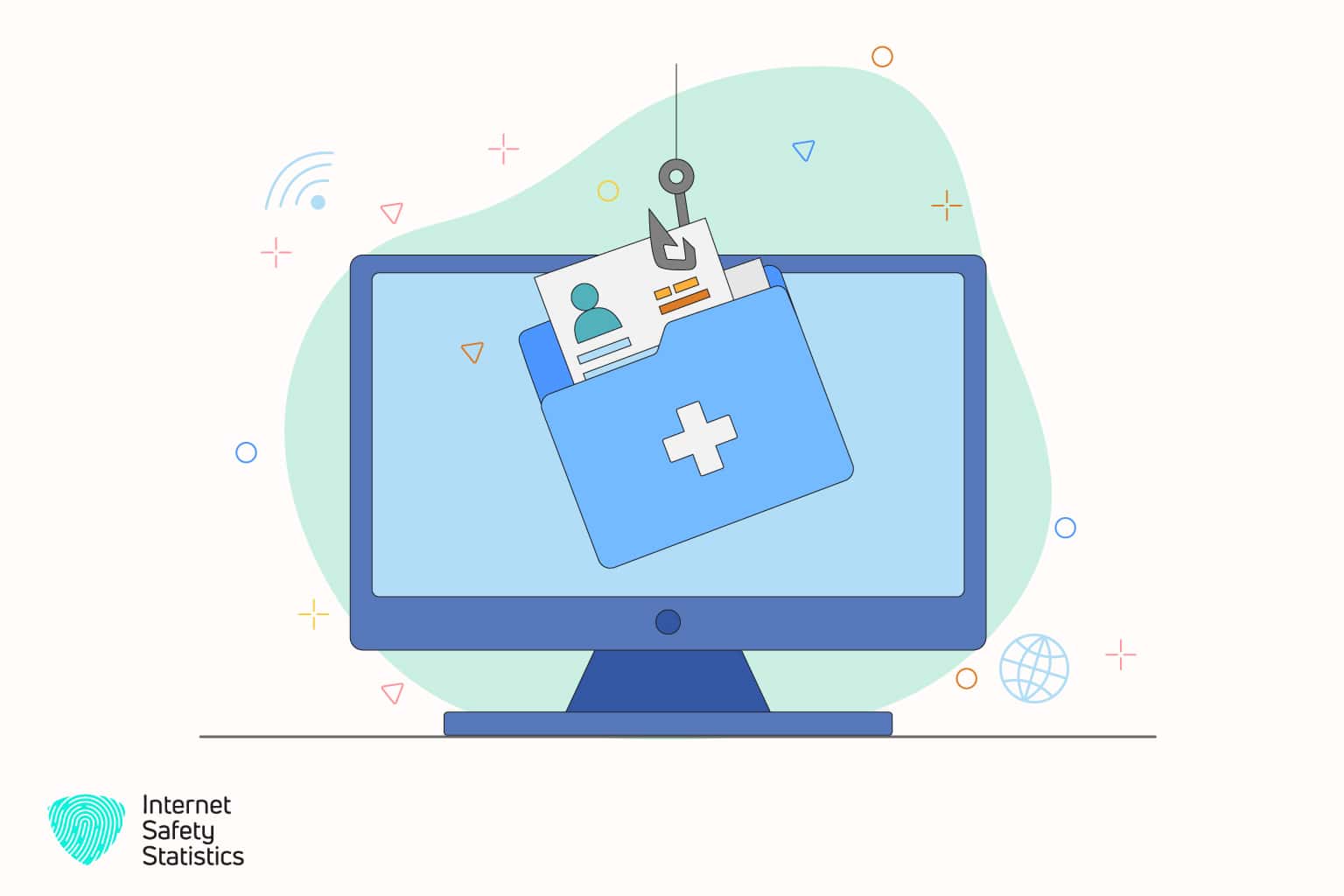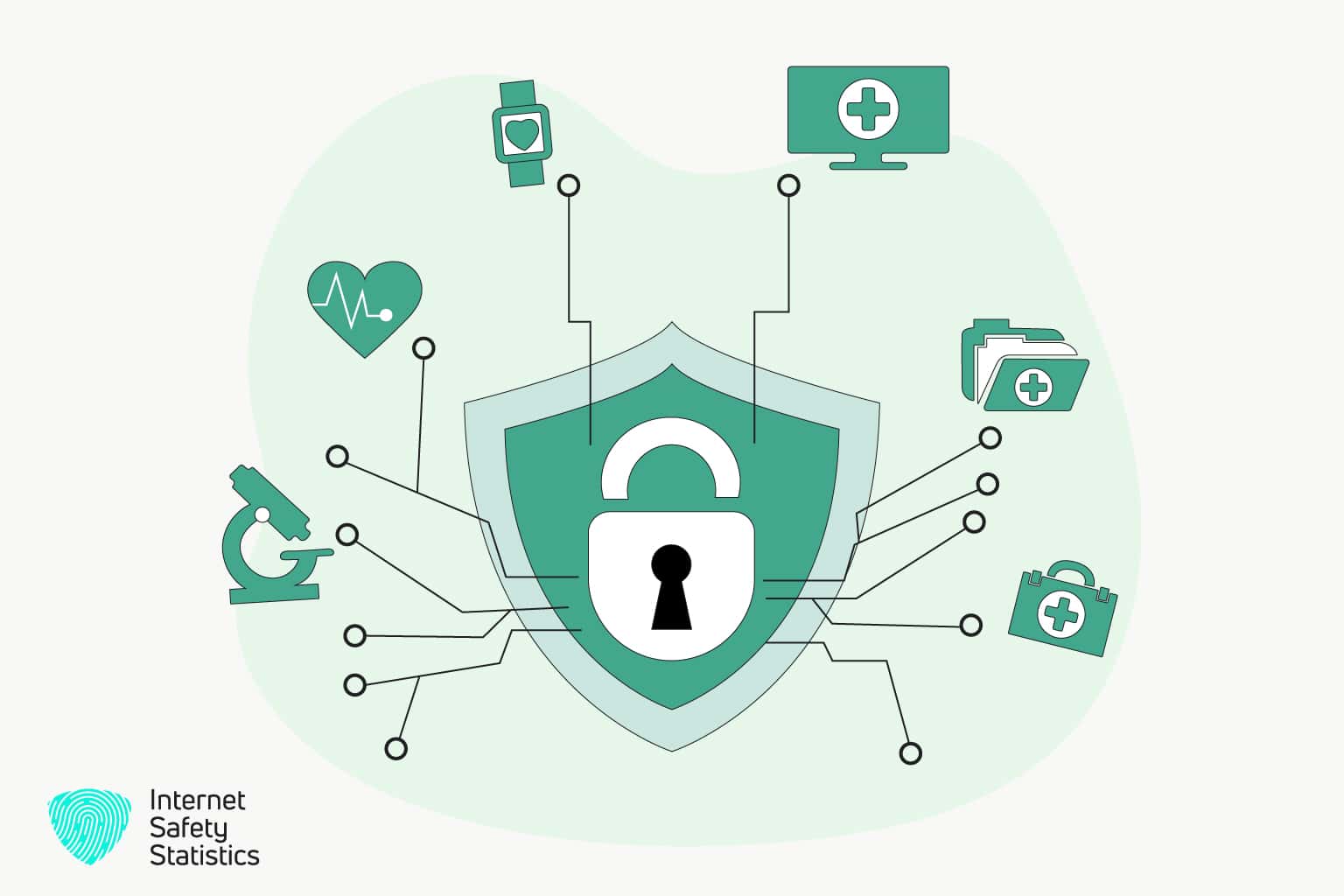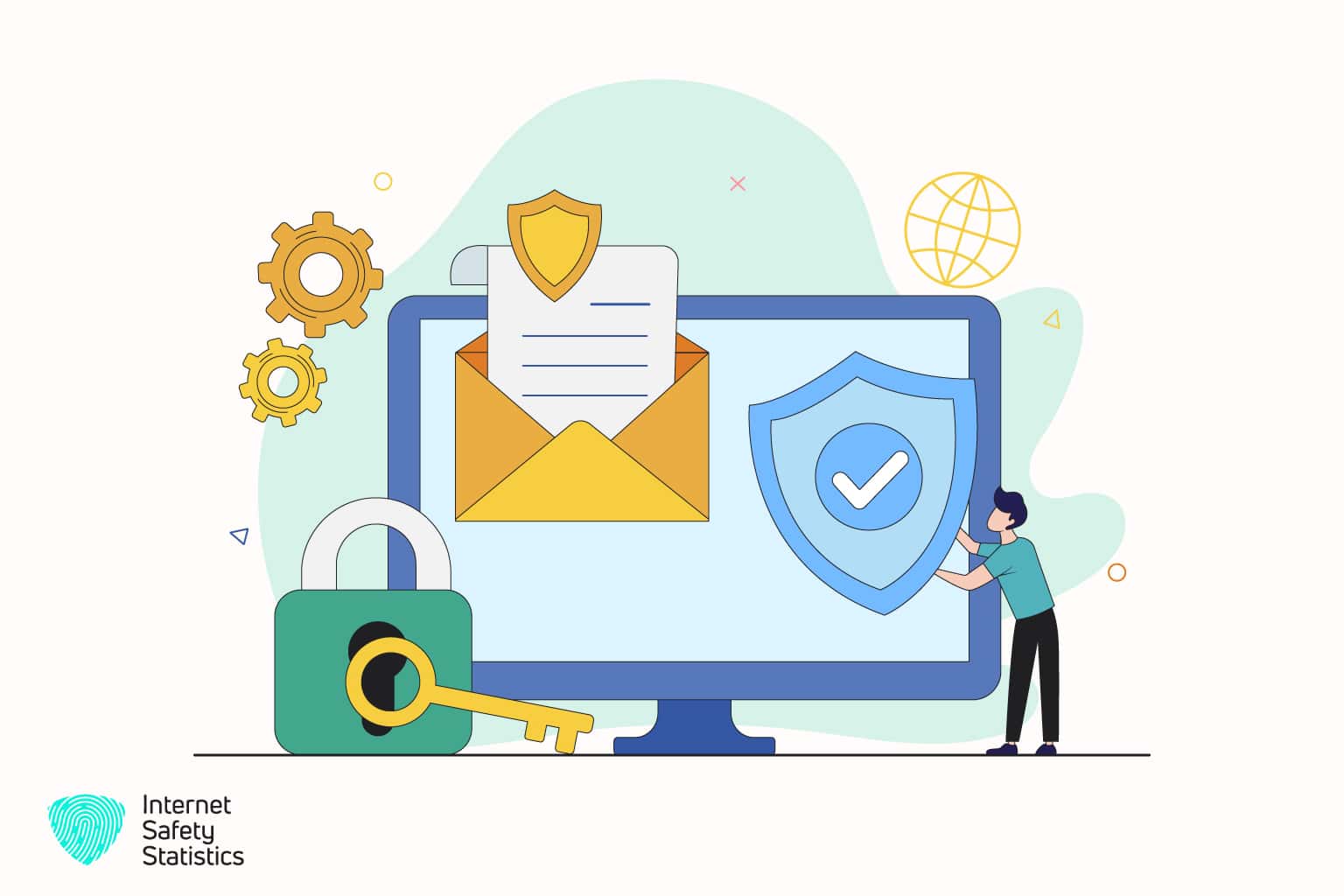
The healthcare industry is becoming more dependent on technology nowadays more than ever. From record keeping to improving patient care, streamline processes.
However, this reliance on digital systems has also opened the door to a growing threat: medical identity theft. Patient data security and privacy can be compromised easily, putting the healthcare system at risk.
As medical identity theft continues to rise, it is crucial to address the implications of this crime and explore practical ways to protect patient safety through robust healthcare cybersecurity measures. This article aims to delve into the intricate web of medical identity theft, shed light on its risks to patient safety, and outline key strategies to safeguard against these threats.
Understanding Medical Identity Theft
Medical identity theft refers to the fraudulent acquisition, use, or disclosure of an individual’s personal health information for economic gain. This crime can manifest in various forms, such as obtaining prescription drugs, receiving medical services, or submitting false insurance claims under someone else’s identity.

Definition and Types of Medical Identity Theft
Medical identity theft encompasses a range of activities, including:
Identity Theft for Medical Services: When an individual uses another person’s identity to seek medical treatment or services, leaving the victim with inaccurate medical records and potential health complications.
Insurance Fraud: When stolen personal health information is used to file fraudulent insurance claims for medications, treatments, or procedures that the victim never received.
Prescription Fraud: When an imposter uses someone else’s identity to obtain prescription medications, leading to potential health risks for both the victim and the imposter.
Common Methods and Motivations of Medical Identity Theft
Medical identity theft can be facilitated through various means, including:
Data Breaches: Cybercriminals exploit vulnerabilities in healthcare systems to gain unauthorised access to patient data, which is then used for identity theft.
Insider Threats: Employees or insiders with access to patient information may misuse or steal sensitive data for personal gain.
Risks to Patient Safety in Medical Identity Theft
Medical identity theft poses significant risks to patient safety, potentially resulting in harmful consequences that can impact individuals physically, emotionally, and financially. Understanding these risks highlights the urgency for robust cybersecurity measures within the healthcare industry.
Medical Identity Theft Most Definitely Leads to Misdiagnosis and Mistreatment.
When an imposter’s medical information is merged with a victim’s records, healthcare providers may base their diagnoses and treatment decisions on inaccurate or incomplete information. This can lead to administering inappropriate medications, unnecessary procedures, or delays in receiving critical care. Such errors can severely affect patient health and well-being, prolong recovery time, and even result in life-threatening situations.
Inaccurate Medical Records and Allergies
In cases of medical identity theft, a victim’s medical records can become contaminated with an imposter’s information. This contamination can lead to incorrect allergies, medical history, or pre-existing conditions being attributed to the victim.
This false information in medical records can lead to wrongly prescribing medications or necessary procedures, endangering patients. Taking informed decisions and providing appropriate care becomes challenging for healthcare providers, undermining the trust and reliability of patient information.
Financial Consequences for Patients
Medical identity theft affects patient safety and has significant financial implications. If a fraudster fraudulently uses a victim’s credentials to obtain medical care or file an insurance claim, the victim’s medical bills may be left unpaid for treatment they never received. Financial dispute resolution can be long and complicated, leading to stress, poor credit scores and even bankruptcy. Moreover, victims of medical identity theft may face challenges in accessing necessary healthcare services due to issues with their insurance coverage or compromised medical records.
Jeopardising Patient Privacy and Confidentiality
The trust between patients and healthcare providers relies on the assurance of privacy and confidentiality regarding personal health information. Medical identity theft breaches this trust and compromises patient privacy. When sensitive health data falls into the wrong hands, it can be sold on the black market or used for fraudulent activities, leading to identity theft beyond the healthcare sector. Such breaches violate an individual’s rights and erode patients’ confidence in the healthcare system. Restoring that trust requires proactive measures to safeguard patient information and prevent unauthorised access.
The Role of Healthcare Cybersecurity
To combat the rising threat of medical identity theft and protect patient safety, healthcare organisations must prioritise robust cybersecurity measures. Effective healthcare cybersecurity involves implementing comprehensive strategies, advanced technologies, and ongoing vigilance to safeguard patient information and maintain the integrity of healthcare systems.
Importance of Robust Cybersecurity Measures
The digitisation of healthcare systems has introduced efficiencies and improved patient care but has also made the industry vulnerable to cyber threats. Robust cybersecurity measures are essential to prevent unauthorised access, data breaches, and identity theft. By prioritising cybersecurity, healthcare organisations demonstrate their commitment to patient safety, protect sensitive medical data, and maintain the trust of the individuals they serve.

Key Elements of Effective Healthcare Cybersecurity
Comprehensive healthcare cybersecurity encompasses various elements that work in tandem to protect patient information. These fundamental elements include:
Access Controls: Implementing strict access controls and user authentication protocols ensures that only authorised personnel can access sensitive patient data.
Data Encryption: Utilising encryption techniques to protect data at rest and during transmission makes it unreadable to unauthorised individuals.
Network Security: Implementing firewalls, intrusion detection systems, and secure network architecture to prevent unauthorised access and network breaches.
Regular Software Updates and Patch Management: Updating software regularly and installing the latest security systems will reduce the risk of hacking and fraud.
Employee Education and Training: Educating healthcare staff about the importance of cybersecurity, the risks of medical identity theft, and best practices for data protection to foster a culture of security awareness.
Incident Response and Disaster Recovery Plans: Establishing protocols for promptly responding to cybersecurity incidents, mitigating their impact, and implementing measures for swift recovery.
Major Cybersecurity Challenges in the Healthcare Sector
The healthcare industry faces unique challenges in maintaining robust cybersecurity. These challenges include:
The complexity of Systems: Healthcare organisations often utilise diverse systems and technologies that may need to seamlessly integrate, creating vulnerabilities and potential entry points for cyber attackers.
Insider Threats: Employees or insiders with access to sensitive information can inadvertently or deliberately compromise patient data, highlighting the need for strict access controls and employee education programmes.
Legacy Systems: Outdated or unsupported legacy systems may lack the necessary security measures, making them susceptible to exploitation by cybercriminals.
Interconnectivity and Data Sharing: The sharing of patient data between different healthcare entities increases the attack surface and requires secure data exchange protocols to maintain privacy and security.
Government Regulations and Compliance Standards
Recognising the importance of healthcare cybersecurity, regulatory bodies have introduced various regulations and compliance standards. These laws, like the Health Insurance Portability and Accountability Act (HIPAA) in the United States, aim to protect patient privacy and establish security standards for healthcare organisations. Compliance with these laws is critical to ensure patient safety, avoidance of legal sanctions, and assurance of patient care.
Social Engineering: Fraudsters employ manipulation tactics, such as phishing emails or phone scams, to trick individuals into revealing their personal health information.
The Impact on Patient Safety and the Healthcare System
Medical identity theft can have severe consequences for individual patients and the healthcare system. Some of the risks include:
Misdiagnosis and Mistreatment: Incorrect medical records can lead to misdiagnosis, inappropriate treatments, or medication errors, endangering patient health and well-being.
Inaccurate Medical Records and Allergies: When an imposter’s information is merged with a victim’s medical records, it can result in erroneous information, including incorrect allergies or medical history, potentially leading to adverse reactions or inappropriate treatments.
Financial Consequences for Patients: Victims of medical identity theft may face significant financial burdens, such as unpaid medical bills or damage to their credit scores due to fraudulent claims.
Jeopardising Patient Privacy and Confidentiality: Medical identity theft breaches patient trust and compromises the privacy and confidentiality of their sensitive health information.
Strategies to Protect Patient Safety and Prevent Medical Identity Theft
Safeguarding patient safety and preventing medical identity theft requires a multi-faceted approach that combines technological advancements, organisational policies, and individual awareness. The following strategies can help healthcare organisations mitigate the risks associated with medical identity theft:
Enhanced Authentication and Access Controls
Implementing robust authentication methods, such as two-factor authentication, biometrics, or smart cards, adds an extra layer of security to verify the identity of individuals accessing patient records. Additionally, establishing role-based access controls ensures that only authorised personnel can access sensitive information, limiting the potential for unauthorised use or disclosure.
Data Encryption and Secure Transmission
Employing robust encryption algorithms to protect patient data is crucial. Encryption ensures that even if data is accessed or intercepted unlawfully, it remains unintelligible to unauthorised individuals. Healthcare organisations should prioritise encryption for data at rest, data in transit, and data exchanged with external entities to maintain confidentiality and integrity.
Employee Education and Training
Healthcare employees play a pivotal role in maintaining patient safety and protecting against medical identity theft. Regular training sessions on data privacy, cybersecurity best practices, and identifying social engineering attacks can help employees recognise and respond appropriately to potential threats. By fostering a culture of cybersecurity awareness, healthcare organisations can empower their workforce to become active participants in safeguarding patient information.

Regular Security Audits and Risk Assessments
Regular security audits and risk assessments help identify vulnerabilities and areas of weakness within the healthcare system’s cybersecurity infrastructure. These assessments enable organisations to proactively address potential security gaps, update policies and procedures, and ensure compliance with industry standards and regulations. By conducting thorough and frequent evaluations, healthcare entities can stay ahead of emerging threats and adapt their security measures accordingly.
Disaster Recovery Plans and Incident Response
Developing comprehensive disaster recovery plans and incident response are critical to minimise the impact of cybersecurity incidents and swiftly restore operations. These plans should outline the steps to be taken in case of a breach or unauthorised access, including notifying affected individuals, securing affected systems, and initiating recovery processes. Regular testing and updating of these plans ensure their effectiveness and readiness when needed.
Collaborative Efforts for Healthcare Cybersecurity
Enhancing healthcare cybersecurity requires collaborative efforts and partnerships across various stakeholders. By working together, healthcare organisations, IT professionals, and patients can establish a more vigorous defence against medical identity theft:
Role of Healthcare Providers and Organisations
Healthcare providers should prioritise cybersecurity as an integral part of their operations and allocate sufficient resources to implement robust security measures. It is essential to foster a security culture within organisations, ensuring that cybersecurity practices are embedded in daily operations and that employees receive ongoing training to stay updated on emerging threats.
Collaboration with IT Professionals and Security Experts
Engaging with IT professionals, cybersecurity experts, and consultants can provide healthcare organisations with specialised knowledge and assistance in developing and implementing effective security strategies. Collaboration with these experts helps identify vulnerabilities, establish best practices, and deploy advanced technologies that strengthen cybersecurity defences.
Public Awareness and Patient Engagement
Raising public awareness about medical identity theft, its risks, and preventive measures is crucial. Healthcare organisations should educate patients about the importance of protecting their health information, encouraging them to be vigilant and report suspicious activities. Patient engagement can be fostered through educational campaigns, informative materials, and user-friendly platforms enabling patients to access their health records securely.
Real-Life Examples of Medical Identity Theft and Consequences
Examining real-life cases of medical identity theft highlights the devastating consequences it can have on patients and healthcare systems. These examples serve as stark reminders of the urgent need for robust cybersecurity measures:
Case Study 1: John’s Misdiagnosis and Treatment John, a victim of medical identity theft, discovered that an imposter had used his identity to receive medical services. As a result, John’s medical records became intertwined with the imposter’s, leading to incorrect information about John’s allergies and medical history. When John sought treatment for a severe allergic reaction, healthcare providers were unaware of his accurate medical background. This misdiagnosis and mistreatment prolonged his recovery, endangered his health, and highlighted the critical importance of correct medical records in delivering proper care.
Case Study 2: Lisa’s Financial Burden Lisa fell victim to medical identity theft when an imposter used her identity to file fraudulent insurance claims for expensive medications and treatments she never received. As a result, Lisa faced substantial financial burdens, including unpaid medical bills and damage to her credit score. Resolving the fraudulent claims required extensive time and effort, causing significant stress and anxiety. Lisa’s case underscores the financial impact medical identity theft can have on individuals and emphasises the need for comprehensive preventive measures.
The Future of Healthcare Cybersecurity and Patient Safety
As technology advances, healthcare cybersecurity must evolve to keep pace with emerging threats. The following areas hold promise for the future of healthcare cybersecurity and patient safety:
Artificial Intelligence (AI) and Machine Learning
Leveraging AI and machine learning algorithms can enhance the prevention and detection of medical identity theft. These technologies can analyse patterns, identify anomalies, and alert healthcare organisations to potential breaches or unauthorised access attempts in real-time. Implementing AI-driven solutions empowers healthcare providers with proactive security measures and reduces response time to cyber threats.

Blockchain Technology
Blockchain technology offers potential solutions to secure health data exchange and prevent unauthorised modifications. Its decentralised and immutable nature ensures that patient information remains tamper-proof and transparent, mitigating the risk of data breaches and medical identity theft. Blockchain in healthcare systems can enhance data integrity, patient privacy, and interoperability across different providers.
Collaboration and Information Sharing
To combat medical identity theft effectively, collaboration among healthcare organisations, government entities, and cybersecurity experts is crucial. Sharing information about emerging threats, best practices, and lessons learned fosters a collective defence against cybercriminals. Collaboration also facilitates the development of standardised security protocols and guidelines, ensuring consistency and a united front against medical identity theft.
Enhanced authentication, data encryption, employee education, regular security audits, and incident response plans form the foundation of a robust cybersecurity framework. Healthcare organisations can bolster their defences and stay ahead of evolving cyber threats by integrating advanced technologies, such as AI and blockchain. Furthermore, collaborative efforts among stakeholders, including healthcare providers, IT professionals, and patients, foster a shared responsibility to protect patient information and prevent medical identity theft.
